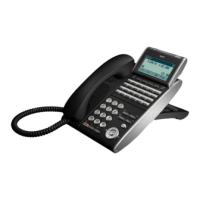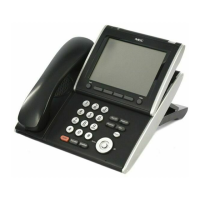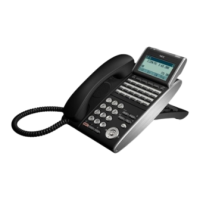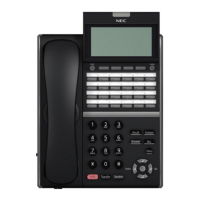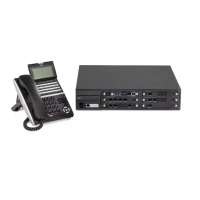Program 10 : System Configuration Setup
10-09 : DTMF, Dial T
one Detection Setup
Level:
IN
Description
Use Program 10-09 : DTMF, Dial T
one Detection Setup to allocate the circuits on the CPU for either
DTMF receiving or dial tone detection.
Use the following as a guide when allocating DTMF receivers:
• In light traffic sites, allocate one DTMF receiver for every 8 devices that use them.
• In heavy traffic sites, allocate one DTMF receiver for every 3 devices that use them.
Input Data
Circuit/Resource Number 1 ~ 140
Item
No.
Item Input Data Default
01 DTMF, Dial Tone Detection 0 = Common use for both analog extensions and
trunks
1 = Use for analog extensions (DTMF receivers)
2 = Use for analog trunks (DTMF receivers/Dial
tone Detection/Caller ID detection)
Resource 1 ~ 140 = 0
Conditions
• CPU has 28 (Hybrid ML
T Configuration) 24 (Digital MLT Configuration) Channel DSP resources
(receivers) only for basic CPU Board. EXIFB-C1 has additional 48 DSP resources which you can
add to CPU. Addition to that EXIFE also each has 32 DSP resource (receivers) only for expand
board.
• In case of 0 (= Common) is selected, and if 14-02-10 (Caller ID receive ability) is set to “Yes”, DSP
resources are always allocated to analog trunk only, not for analog extension. If 14-02-10 is set to
“No”, the DSP resources can be used for both analog trunk and analog extension commonly.
• You can define the figure for the resource number from 25 to 28, but you can't use the resources
due to the DSP specifications.
Feature Cross Reference
• Caller ID
• Central Of
fice Calls, Placing
• Direct Inward Dialing (DID)
• Direct Inward System Access (DISA)
ISSUE 2.0 SL2100
Programming Manual 2-17
Program
10

